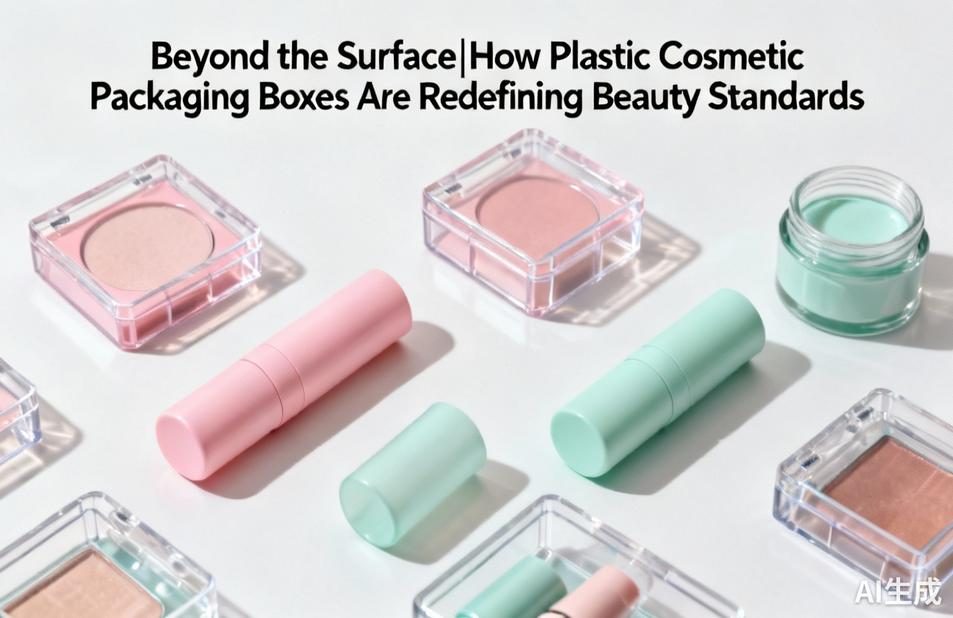
In the dazzling world of cosmetics, where first impressions are everything, plastic cosmetic packaging boxes have emerged as silent ambassadors of brand identity and product excellence. These meticulously designed containers do more than just house your favorite serums and foundations—they tell a story, create emotional connections, and elevate the entire user experience from mundane to magical. The evolution of plastic packaging in the beauty industry represents a fascinating intersection of functionality, sustainability, and artistic expression that continues to shape consumer perceptions and purchasing decisions.
The journey of plastic cosmetic packaging begins with its unparalleled versatility. Unlike traditional materials, plastic offers manufacturers incredible flexibility in design, color, and texture. From transparent acrylic boxes that showcase product purity to matte-finish containers that whisper luxury, plastic packaging can be molded into virtually any form imaginable. This adaptability allows brands to create distinctive packaging that stands out in crowded retail environments and resonates with their target audience. The material’s durability ensures that products remain protected during transportation and storage while maintaining their pristine condition until they reach the consumer’s hands.
Modern plastic cosmetic packaging has undergone a remarkable transformation in response to growing environmental concerns. The industry has witnessed a significant shift toward recycled materials, biodegradable polymers, and innovative manufacturing processes that reduce carbon footprint. Leading cosmetic brands are now incorporating post-consumer recycled (PCR) plastics into their packaging, creating a circular economy that minimizes waste. Advanced technologies have enabled the development of plant-based bioplastics derived from renewable resources like corn starch and sugarcane, offering comparable performance to conventional plastics while being compostable under proper conditions.
Functionality remains at the core of plastic packaging innovation. Today’s cosmetic boxes feature sophisticated closures, precision applicators, and airless pump systems that preserve product integrity and enhance user convenience. The integration of smart technology has introduced packaging with QR codes, NFC chips, and augmented reality features that provide consumers with product information, usage tutorials, and brand stories. These technological advancements transform ordinary packaging into interactive platforms that extend brand engagement beyond the point of purchase.
The psychological impact of plastic cosmetic packaging cannot be overstated. Color psychology plays a crucial role in packaging design, with specific hues evoking particular emotions and perceptions. Soft pinks and pearls may convey femininity and elegance, while bold blacks and golds suggest luxury and sophistication. The tactile experience of holding a well-crafted plastic container—the satisfying click of a secure closure, the smooth glide of a precision applicator—creates sensory memories that strengthen brand loyalty. This multisensory approach to packaging design demonstrates how plastic containers have become integral to the overall product experience.
Looking toward the future, plastic cosmetic packaging continues to evolve with emerging trends and consumer demands. The rise of refillable systems represents a significant step toward sustainable beauty, with many brands designing durable outer containers meant to be replenished with product pods or cartridges. Minimalist designs are gaining popularity among environmentally conscious consumers who appreciate reduced material usage and cleaner aesthetics. Meanwhile, personalized packaging—featuring custom colors, monograms, or designs—creates unique consumer connections in an increasingly digital marketplace.
The regulatory landscape surrounding plastic packaging is also transforming, with governments worldwide implementing extended producer responsibility (EPR) schemes and recycling mandates. Cosmetic companies are responding by developing comprehensive sustainability strategies that encompass material selection, manufacturing processes, and end-of-life solutions. Collaboration across the supply chain—from raw material suppliers to packaging manufacturers and brand owners—is driving innovation in recyclable packaging designs and closed-loop systems that keep plastics in circulation and out of landfills.
Despite the challenges and criticisms facing plastic packaging, its role in the cosmetic industry remains vital. The material’s lightweight nature reduces transportation emissions, its durability protects valuable products, and its versatility enables creative brand expression. As technology advances and consumer preferences evolve, plastic cosmetic packaging will continue to adapt, offering new solutions that balance aesthetic appeal, functional performance, and environmental responsibility. The future of beauty packaging lies not in abandoning plastic altogether but in reinventing it through innovation, collaboration, and conscious design.
In conclusion, plastic cosmetic packaging boxes represent far more than simple containers—they are sophisticated brand touchpoints that communicate values, enhance experiences, and drive purchasing decisions. Through continuous innovation in materials, design, and technology, the industry is transforming plastic packaging from a potential environmental liability into a showcase of sustainable innovation. As consumers become more educated and demanding, and as technology provides new possibilities, plastic cosmetic packaging will continue to evolve, reflecting the changing beauty standards of our time while protecting both the products we love and the planet we inhabit.




Leave a Message